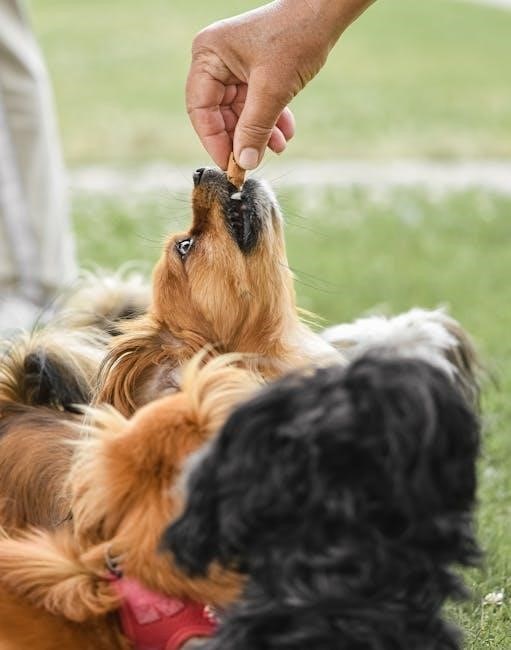
This guide offers essential insights into properly feeding your Royal Canin Maxi puppy. It covers important topics, from understanding the nutritional needs of large breed puppies to establishing a consistent feeding schedule. Properly feeding your puppy is critical for their healthy growth and development into adulthood.
Royal Canin Maxi Puppy food is specially formulated to meet the unique nutritional demands of large breed puppies. These puppies, expected to weigh between 26kg and 44kg as adults, require a tailored diet to support their rapid growth phase. This specialized food caters to puppies aged 2 to 15 months.
Understanding the importance of proper nutrition during this critical development stage, Royal Canin has designed a formula rich in essential nutrients. These nutrients contribute to healthy bone and joint development, a strong immune system, and optimal digestive health. The food contains a precise balance of proteins, fats, and carbohydrates to fuel their high energy needs.
Royal Canin Maxi Puppy food also includes a patented complex of antioxidants, including vitamin E. These antioxidants help to strengthen your puppy’s natural defenses, offering protection during a vulnerable period when their immune system is still maturing. This formula is designed to support every aspect of your puppy’s health;
Choosing the right puppy food is a key decision, and Royal Canin Maxi Puppy offers a comprehensive solution. It is important to consult with your veterinarian for personalized feeding guidance. This will help ensure your puppy receives the optimal nourishment for a healthy start to life.
Nutritional Needs of Maxi Breed Puppies

Maxi breed puppies have distinct nutritional requirements. They require carefully balanced nutrition to fuel their rapid growth and development. Unlike smaller breeds, maxi puppies experience a longer growth period, extending up to 15 months. This extended growth necessitates precise dietary management to prevent health issues.
One crucial aspect is ensuring adequate, yet controlled, calorie intake. Overfeeding can lead to excessively rapid growth, predisposing them to skeletal problems like hip and elbow dysplasia. A diet rich in high-quality protein is vital for muscle development, while controlled levels of calcium and phosphorus support bone formation.
Maxi breed puppies also benefit from nutrients that support joint health, such as glucosamine and chondroitin. These components help maintain cartilage integrity and reduce the risk of joint problems later in life. Essential fatty acids, like omega-3 and omega-6, contribute to healthy skin and a shiny coat.
Moreover, a highly digestible formula is essential. Maxi puppies often have sensitive digestive systems, making easily absorbable nutrients crucial for preventing digestive upset. Fiber plays a key role in promoting healthy digestion and ensuring proper stool formation. Meeting these specialized nutritional needs is paramount for the long-term health and well-being of maxi breed puppies.
Understanding the Royal Canin Maxi Puppy Feeding Chart
The Royal Canin Maxi Puppy feeding chart is an essential tool for ensuring your large breed puppy receives the correct amount of nutrition. This chart provides guidelines based on your puppy’s age and expected adult weight, helping you tailor their food intake appropriately.
The chart typically lists age ranges in months (e.g., 2-4 months, 5-6 months) and corresponding daily food quantities in grams. These quantities are further divided based on the puppy’s projected adult weight, usually ranging from 26kg to 44kg. To effectively use the chart, first determine your puppy’s current age and estimate their expected adult weight.
Consulting your veterinarian is crucial for accurately predicting adult weight, as it depends on breed and genetics. Once you have these two pieces of information, locate the corresponding section on the chart. The recommended daily amount should then be split into multiple meals, as puppies require frequent feeding.
Remember that the feeding chart provides a starting point, and individual needs may vary. Factors like activity level and metabolism can influence the ideal food intake. Regularly monitor your puppy’s body condition and adjust the feeding amount accordingly. If your puppy seems underweight or overweight, consult with your veterinarian for personalized advice. The Royal Canin feeding chart is a valuable resource, but it should be used in conjunction with professional guidance to ensure optimal health for your maxi puppy.
Feeding Schedule for Maxi Puppies (2-15 Months)
Establishing a consistent feeding schedule is crucial for the healthy development of your Royal Canin Maxi puppy. From 2 to 15 months, their nutritional needs change rapidly, requiring adjustments to their feeding routine. Consistency aids in digestion, house training, and overall well-being.
During the early months (2-6 months), it’s recommended to feed your puppy three meals a day, spaced evenly throughout the day. This frequent feeding schedule accommodates their small stomach capacity and supports their rapid growth phase. As your puppy grows (6-15 months), you can transition to two meals a day.
This adjustment aligns with their decreasing growth rate and increasing stomach size. It’s essential to maintain consistent mealtimes, creating a predictable routine for your puppy. Choose specific times that fit your lifestyle and stick to them as closely as possible. Avoid leaving food out all day, as this can lead to overeating and digestive issues;
Instead, offer the designated portion for each meal and remove any uneaten food after a set period (e.g., 15-20 minutes); This helps regulate their appetite and prevents them from becoming picky eaters. Remember to consult the Royal Canin Maxi Puppy feeding chart to determine the appropriate food quantity based on their age and weight. Regularly monitor their body condition and adjust the schedule as needed, in consultation with your veterinarian, to ensure they are thriving.
Determining the Correct Food Quantity
Determining the correct food quantity for your Royal Canin Maxi puppy is paramount to their healthy growth and development. Overfeeding can lead to obesity and skeletal problems, while underfeeding can result in malnutrition and stunted growth. Factors such as age, weight, breed, and activity level play a significant role in determining the appropriate amount of food.

The Royal Canin Maxi Puppy feeding chart serves as a valuable guide, providing recommended daily portions based on your puppy’s age and expected adult weight. It’s essential to consult this chart regularly and adjust the food quantity as your puppy grows. However, the chart should be considered a starting point, as individual needs may vary.
Closely observe your puppy’s body condition to assess whether they are receiving the right amount of food. You should be able to feel their ribs easily without excessive fat covering them. A visible waistline when viewed from above is also a good indicator of a healthy weight. If your puppy appears overweight or underweight, adjust the food quantity accordingly, making gradual changes to avoid digestive upset.
Consider your puppy’s activity level when determining their food needs. Active puppies require more calories than less active ones. Consult with your veterinarian to determine the ideal food quantity for your Royal Canin Maxi puppy, taking into account their individual circumstances. They can provide personalized recommendations and monitor your puppy’s growth to ensure they are on the right track.

Importance of Regular Feeding Times
Establishing regular feeding times for your Royal Canin Maxi puppy is crucial for their physical and behavioral well-being. Consistency in feeding schedules helps regulate their digestive system, promoting efficient nutrient absorption and preventing digestive upsets. Puppies thrive on routine, and regular feeding times provide a sense of security and predictability in their daily lives.
A consistent feeding schedule can aid in house training by establishing regular bowel movements. Puppies typically need to eliminate shortly after eating, so taking them outside after each meal can help them learn to associate the outdoors with potty time. This can significantly reduce accidents inside the house.
Regular feeding times also contribute to better appetite control. Puppies who are fed at consistent intervals are less likely to overeat or develop picky eating habits. When food is readily available throughout the day, puppies may graze, leading to weight gain and digestive issues. Scheduled meals help them understand when it’s time to eat and encourage them to consume their entire portion.
Furthermore, regular feeding times can strengthen the bond between you and your puppy. The act of providing food is a powerful way to build trust and affection. Puppies quickly learn to associate you with positive experiences, making feeding time a rewarding and enjoyable interaction for both of you.
Aim to feed your Royal Canin Maxi puppy at the same times each day, even on weekends. This consistency will help them develop healthy eating habits and promote overall well-being.
Transitioning from Puppy to Adult Food
Knowing when and how to transition your Royal Canin Maxi puppy to adult food is crucial for their long-term health. Maxi breed puppies, with an expected adult weight of 26-44kg, typically require puppy food until they are around 15 months old. This extended period allows them to fully develop their skeletal structure and muscle mass.
The transition should be gradual to avoid digestive upset. Start by mixing a small amount of adult food with their regular puppy food. Over a period of 5-7 days, gradually increase the proportion of adult food while decreasing the amount of puppy food. This allows their digestive system to adjust to the new food.
Monitor your puppy’s stool during the transition. If they experience diarrhea or vomiting, slow down the process and consult with your veterinarian. It’s also important to choose a high-quality adult food that is specifically formulated for large breed dogs. This will ensure they receive the appropriate balance of nutrients for their continued health.
Consider your dog’s activity level when selecting an adult food. Active dogs may require a food with a higher protein and fat content, while less active dogs may need a food with fewer calories to prevent weight gain. Always follow the feeding guidelines on the adult food packaging.
Remember, every dog is different, and their individual needs may vary. Consult with your veterinarian to determine the best time to switch your Royal Canin Maxi puppy to adult food and to choose the most appropriate adult food for their specific needs.
The Royal Canin Puppy Growth Program
Royal Canin offers a structured Puppy Growth Program designed to meet the evolving nutritional needs of puppies as they develop. This program acknowledges that puppies undergo significant changes from birth to adulthood, requiring tailored nutrition at each stage. The program is divided into phases, each addressing specific developmental milestones.
The first stage focuses on weaning, introducing puppies to solid food with formulas that are easily digestible and palatable. As puppies grow, the program adapts to support their rapidly developing bones, muscles, and immune systems. Royal Canin’s Maxi Puppy food, for example, is formulated for large breed puppies (26-44kg adult weight) up to 15 months old.
This program provides a scientifically-backed approach to puppy nutrition, ensuring they receive the right balance of nutrients at each stage of their growth. It considers factors like breed size, activity level, and individual sensitivities to optimize their development. Royal Canin collaborates with breeders, veterinarians, and nutritionists to develop these specialized formulas.
The program emphasizes the importance of portion control and regular feeding schedules. It also provides guidance on transitioning to adult food when the puppy reaches the appropriate age. By following the Royal Canin Puppy Growth Program, owners can provide their puppies with the best possible start in life, setting the foundation for a healthy and happy adulthood.
Consult with your veterinarian to determine the best stage of the Puppy Growth Program for your Royal Canin Maxi puppy and to address any specific nutritional concerns.
Common Feeding Problems and Solutions
Feeding a Royal Canin Maxi puppy can sometimes present challenges. One common issue is a lack of appetite. This can be due to various factors, including stress, changes in environment, or underlying health conditions. If your puppy consistently refuses food, consult your veterinarian to rule out any medical concerns.
Another problem is rapid eating, which can lead to bloating or digestive upset. Using a slow-feeder bowl can help to regulate their intake. Conversely, some puppies may be picky eaters. Try moistening the kibble with warm water to enhance its aroma and palatability, or consider mixing in a small amount of wet puppy food.
Digestive issues such as diarrhea or vomiting can also occur. Ensure your puppy has access to fresh, clean water at all times. If digestive problems persist, consult with your veterinarian to identify potential allergies or sensitivities. It’s important to transition to a new food gradually to avoid digestive upset.
Overfeeding can lead to obesity and skeletal problems in large breed puppies. Adhere strictly to the feeding guidelines provided by Royal Canin, and adjust portions based on your puppy’s individual needs and activity level. Remember to factor in treats when calculating their daily food intake.
Finally, be consistent with feeding times and locations to create a sense of routine and security for your puppy. Avoid offering table scraps, as these can disrupt their balanced diet.
Consulting with Your Veterinarian
While feeding guides and charts provide valuable information, consulting with your veterinarian is a crucial step in ensuring your Royal Canin Maxi puppy receives the optimal nutrition. Every puppy is unique, with individual needs based on factors such as genetics, health history, and activity level.
Your veterinarian can assess your puppy’s overall health and growth, identifying any potential deficiencies or sensitivities. They can provide personalized recommendations regarding the appropriate amount of Royal Canin Maxi Puppy food to feed, taking into account your puppy’s specific circumstances.
Furthermore, your veterinarian can help you monitor your puppy’s weight and body condition, adjusting the feeding plan as needed to maintain a healthy growth rate. They can also address any feeding-related concerns or problems you may encounter, such as a lack of appetite or digestive issues.

Regular check-ups with your veterinarian are essential for detecting any underlying health conditions that may affect your puppy’s nutritional needs. They can also advise you on the appropriate timing for transitioning your puppy to adult food, ensuring a smooth and healthy transition.
Don’t hesitate to seek professional guidance from your veterinarian throughout your puppy’s growth and development. Their expertise can help you make informed decisions about your puppy’s diet, ensuring they receive the best possible start in life.




